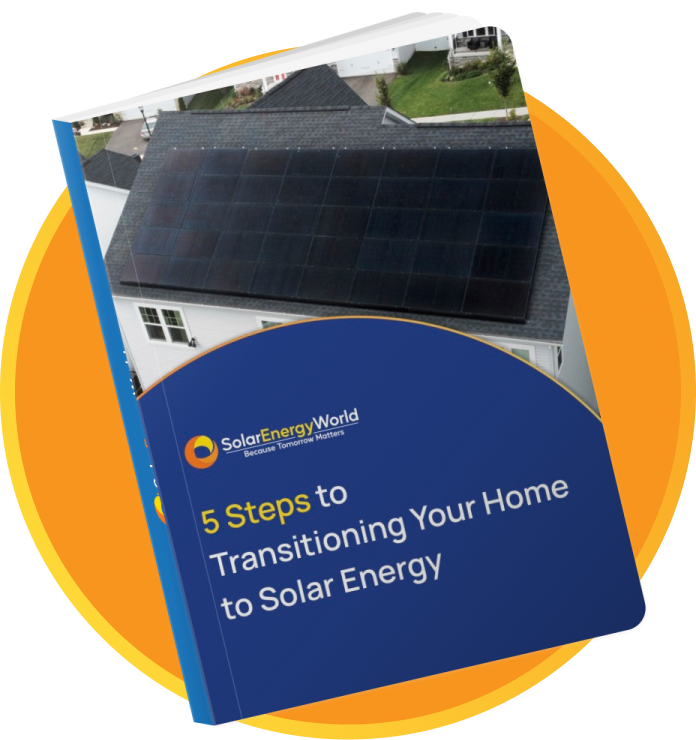Article
The Hidden Costs of Not Going Solar

The upfront expenses of installing a solar panel array can dissuade some homeowners from embracing alternative energy, but have you ever considered the hidden costs of not going solar? It turns out that missed savings, growing utility bills, and mounting environmental impacts of continued reliance on fossil fuels may cost more over time.
If you’ve ever wondered, “How does solar energy save money in the long run?” or “What happens if I don’t switch to solar energy?” you’re in the right place! Today, we’re shining a light on the hidden expenses of avoiding solar.
Benefits vs. Costs of Solar Energy
While the precise cost of installing solar panels will vary by your location, how many panels you need, and the specifications of your rooftop or property, these arrays usually pay for themselves within 7 to 10 years. Whether you buy or lease your solar array, you can enjoy a wide array of advantages over sticking with the aging electrical grid, including:
Lower Utility Bills
Solar panels can drastically reduce your monthly electrical bills by offsetting the power you draw from the grid. Installing a solar battery or participating in net metering programs can help you compound those savings to see a faster return on your investment.
Since every household is different – the number of people in your home, square footage, energy efficiency, and so on – it can be hard to place a figure on the savings you can expect from solar each month. However, you can calculate your anticipated savings using tools from the US Department of Energy. In general, these figures can range anywhere from 20% to 100% of your typical electrical expenses.
Environmental Impact
For every kilowatt-hour (kWh) your solar panel array generates, you minimize carbon emissions and other dangerous pollutants, including carbon dioxide, nitrogen oxides, and sulfur oxides. Reducing your reliance on fossil fuels improves your personal carbon footprint and benefits the planet’s overall health.
Energy Independence
Despite the undeniable importance of the US electrical grid, its infrastructure is growing more vulnerable to potential failures. Cyber attacks, solar flares, and system overwhelm can all contribute to more frequent blackouts and power interruptions.
Solar panels can help you keep the lights on, even when your neighbors lose power. These systems can also provide autonomy from utility companies and relief from rising energy prices.
Increased Property Value
Numerous studies have shown that homes with renewable energy systems sell for a higher profit than those relying solely on the national power grid. The potential for lower energy costs can make your property more attractive in a hot market. This is especially true for homeowners who purchase their solar array, as some buyers may not want the burden of an existing lease agreement.
Long-Term Savings
When calculating the hidden costs of not going solar, it’s important to factor in the long-term savings you can expect from renewable energy. Throughout the lifespan of your solar array, reduced utility bills and compensation for net metering participation and solar renewable energy certificates (SRECs) can add up to big bucks. Since most solar panels will last 25 to 30 years or more, and most systems pay for themselves within 10 years, you can look forward to decades of financial benefits. Additionally, you may be eligible for tax credits, rebates, and other incentives.
Costs of Solar Energy
Not all costs associated with solar power are hidden. Here are a few basic expenses to anticipate when purchasing a new solar panel array:
Upfront Installation Costs
It isn’t unusual for homeowners to write off solar panels due to the initial sticker price. After all, a $15,000+ investment that isn’t completely necessary may cause some folks to think twice. But you might reconsider when you realize that your investment will save you a substantial amount of money over time.
Maintenance and Repairs
Solar panel arrays don’t require much maintenance, but regularly cleaning your system, inspecting all components, and monitoring your energy production can help you avoid costly repairs down the line. With a little preventative care, you can expect 30 years or more out of your solar panels.
Financing Options
Most reputable solar installation companies are happy to help you work out a financing plan for your residential or commercial array. Whether you choose to purchase or lease, you can start seeing smaller utility bills right away. Remember, various tax incentives, leases, loans, and selling SRECs can all offset the initial financial commitment of a renewable energy system.

How to Switch to Solar in 5 Simple Steps
Costs of Not Switching to Solar Energy
As more Americans embrace renewable energy, homeowners who avoid solar can be at risk of future financial and environmental challenges. Here are the hidden costs of not going solar:
Higher Electricity Bills
It’s no surprise that traditional energy costs are increasing, and these growing expenses show no signs of slowing down. However, generating your own renewable energy with solar panels can reduce this financial burden and give your budget a little more breathing room. Every kilowatt-hour of electricity your system produces is power you own, so you’ll enjoy lower utility bills. Businesses and homeowners who don’t embrace solar energy are bound to pay higher monthly electric expenses.
Missed Tax Credits and Incentives
State and federal tax credits offer major incentives for homeowners with solar panels. For instance, the Investment Tax Credit will reimburse you for 30% of the cost of your initial installation. Additionally, many states offer rebates and savings opportunities for residents and businesses utilizing renewable energy systems. Failing to take advantage of these programs means losing out on potential savings.
Exposure to Rising Energy Prices
Another hidden cost of not going solar is the inability to predict anticipated energy expenses. From daily fluctuations to unexpected price spikes, traditional energy prices can be unpredictable. Extreme weather, supply chain disruptions, and market volatility may all influence the price you pay per kilowatt-hour of electricity from your utility provider. Fortunately, solar can protect you from unstable energy prices by allowing you to generate some or all of the power required to run your home or business.
Continued Reliance on Fossil Fuels
In contrast to the increasing price of fossil fuels, the costs associated with renewable energy are steadily falling, making options like solar more viable for the average consumer. Many homeowners can now enjoy clean energy for a fraction of the price required 10 years ago while also reducing their reliance on harmful fossil fuels. Solar installations offer a green alternative that supports the environment rather than damaging our delicate ecosystems.
Environmental Impact
Non-renewable energy sources come with plenty of notable disadvantages. Fossil fuels like coal, natural gas, and oil don’t replenish themselves over time – or, at least not as quickly as we’re using them. Even nuclear energy relies on vital non-renewable materials. Additionally, many of these processes release harmful chemicals into the atmosphere, leading to rising global temperatures and the destruction of critical habitats.
When weighing the hidden costs of not going solar, remember to consider the impact your dependence on fossil fuels may have on the environment. A solar panel array can help you minimize your carbon footprint, reduce pollution, and support sustainability.
Lower Property Values
Solar installations can make your home more attractive to potential buyers and increase your overall property value. A 2019 Zillow study found that homes with solar panel arrays sell for 4.1% higher than comparable properties without innovative renewable energy systems. In turn, diminished property values are another hidden cost of avoiding solar.
Lost Long-Term Savings
If you’re considering a solar installation, you may have asked yourself, “What are the financial benefits of solar energy?” You already know that these systems typically pay for themselves within 10 years or so and that you can enjoy added perks like tax incentives and rebates for utilizing renewable energy. So, how do these figures add up over the lifespan of your solar array?
Here are the ways you can save money by going solar:
- Reduced monthly energy bills
- Participation in net metering programs
- Selling solar renewable energy certificates
- State and federal tax incentives
- Rebate programs
- Increased property values
By taking advantage of these opportunities, the average homeowner can anticipate a return of about $37,000 over 25 years with solar power. However, some analyses suggest this figure could be closer to $90,000 for particularly prolific systems. Your solar array may generate a 500% return on investment within 20 years. In any case, the long-term payoff should easily offset the initial costs over time.
The Hidden Expenses of Avoiding Solar
A solar panel array is a long-term investment that offers massive savings and environmental benefits over time. With a quality renewable energy system, you can reduce your energy bills by 20% to 100% for 30 years or more while supporting sustainability efforts for a greener future. However, failing to embrace environmentally friendly energy means risking the hidden costs of not going solar. You can expect increasing energy expenses, missed savings opportunities, and a greater toll on the planet. At Solar Energy World, we’re committed to helping our customers reduce their energy bills and environmental impact with cost-effective solar panel arrays. Contact us today to get started with a free solar estimate!
Want a Free Solar Estimate?
Fill out the form to get started today.


